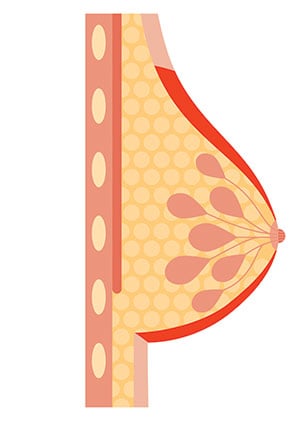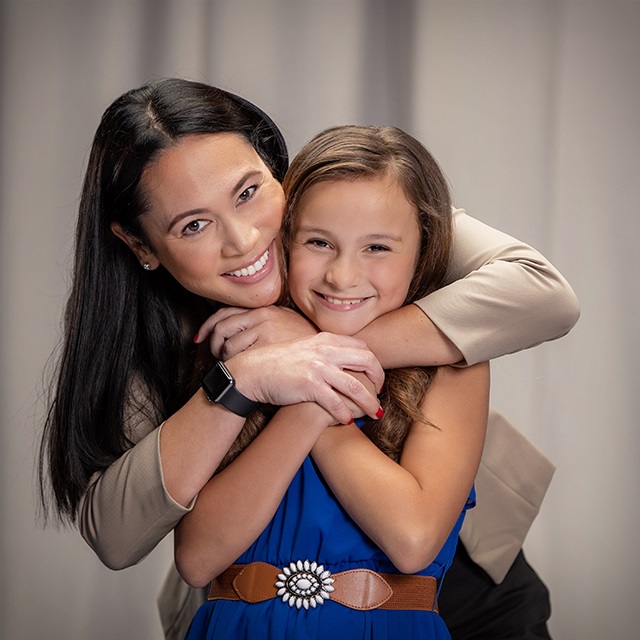Inflammatory Breast Cancer Rash
Inflammatory breast cancer (IBC) is a rare but aggressive condition that tends to develop quickly and often resembles an infection rather than a typical tumor. Unlike many other types of breast cancer that form a distinct lump, IBC spreads through the lymphatic vessels in the breast skin, leading to noticeable changes in skin texture and appearance. A defining feature is a visible rash or redness that affects a significant portion of the breast.
Although IBC accounts for only a small percentage of breast cancer cases, it is known for its rapid progression and need for urgent medical attention. Because the symptoms can mimic those of a less serious condition, such as dermatitis or mastitis, timely evaluation by a physician is essential to ensure an accurate diagnosis and prompt treatment.

What does an inflammatory breast cancer rash look like?
An IBC rash typically appears as widespread redness or discoloration across the skin of the breast. Unlike a minor localized rash, the redness usually covers most of the breast. The skin may look pitted, dimpled or thickened, similar to the texture of an orange peel. Known as peau d’orange, this hallmark sign of inflammatory breast cancer may be accompanied by swelling, warmth and tenderness.
In addition to a distinctive IBC rash, inflammatory breast cancer can cause other visual changes in the breast, including:
- Persistent bruising
- Pink or purple skin blotches
- Skin tightness or shininess due to swelling
Often, these symptoms develop suddenly and worsen rapidly over a few weeks. In some cases, a firm lump can be felt in the breast, although this is highly uncommon with IBC.
Why does inflammatory breast cancer cause a rash?
An IBC rash develops when clusters of cancer cells invade and obstruct the lymphatic vessels in the skin of the breast. A crucial part of the lymphatic system, these vessels circulate lymph, a clear fluid that helps remove waste, excess fluid and harmful substances from tissues throughout the body. When lymphatic vessels in the breast skin are blocked, normal lymph drainage is disrupted, causing fluid to accumulate in the breast tissues. This can lead to visible swelling, redness and other skin changes.
Other signs of inflammatory breast cancer
In addition to an IBC rash, other symptoms of inflammatory breast cancer include:
- A feeling of heaviness or fullness in the breast
- A newly inverted, retracted or flattened nipple
- Enlarged lymph nodes around the collarbone or under the arm
- A solid, hard breast lump (rare)
 Best Mammogram Center
Best Mammogram Center
Voted "Best Mammogram Center" in the Tampa Bay Times Best of the Best People's Choice Awards.
Inflammatory breast cancer vs. breast infection
It is important to keep in mind that IBC is not the only cause of breast skin changes. Mastitis, a noncancerous breast infection, is far more common and can produce many of the same symptoms as inflammatory breast cancer, including:
- Breast pain and tenderness
- Swelling
- Warmth
- Skin discoloration, such as red or purple blotches
That said, mastitis often presents with additional symptoms that are not typically seen in IBC, such as:
- Fever and chills
- Nausea and vomiting
- Yellowish nipple discharge
- A tender, fluid-filled breast lump
While mastitis can affect any woman, it most frequently occurs in breastfeeding mothers due to clogged milk ducts or cracked nipple skin. Treatment typically involves antibiotics, pain relievers, proper hydration and regular breastfeeding or pumping to empty the breast of milk. With appropriate care, mastitis usually resolves within a few days.
Other conditions that can cause a breast skin rash include:
- Breast abscess – A localized infection in the breast tissue, an abscess can produce a painful lump, swelling, redness and sometimes pus drainage, typically requiring antibiotics or drainage.
- Mammary duct ectasia – A benign condition in which milk ducts beneath the nipple become swollen and clogged, mammary duct ectasia can cause breast tenderness, redness and sometimes a thick, sticky nipple discharge.
- Nipple dermatitis – A type of skin inflammation that can affect the nipple and areola, dermatitis may be triggered by an allergic reaction, skin irritation or an underlying skin condition, such as eczema.
- Paget’s disease of the breast – A rare condition in which cancerous cells collect in or around the nipple, Paget’s disease is often mistaken for eczema due to symptoms such as skin redness, irritation and flaking.
Who is at risk for inflammatory breast cancer?
Several factors may increase the risk of developing IBC, although the condition remains rare overall. High-risk individuals include:
- Black women – This demographic group has a disproportionately high incidence of IBC and often presents with more aggressive cancer.
- People with obesity – Excess body weight is associated with chronic inflammation, which may contribute to breast cancer development.
- Those with a family history of breast cancer – Though not specific to IBC, a family history of breast cancer can raise the overall risk.
- Women with dense breasts – Dense breast tissue can obscure abnormalities in imaging tests, making it more difficult to detect precancerous and cancerous changes early.
- Women younger than 60 – Compared to other types of breast cancer, IBC is more frequently diagnosed in young women. The average age at diagnosis is 52.
What to do if you see a rash on your breast
If you notice a rash on your breast, it is important to monitor the area closely and take prompt action by:
Observing the rash carefully
Note the appearance and texture of your breast skin, including when any changes occurred and whether they are becoming more pronounced. Pay attention to other symptoms as well, such as breast swelling, warmth, heaviness, pain and tenderness. Also, check whether the rash affects other areas of your body or is accompanied by a breast lump, nipple changes or unusual discharge.
Considering possible causes
Think about potential noncancerous reasons for the rash, such as a recent skin allergy, irritation from clothing or an insect bite. A mild rash associated with any of these causes should clear up on its own or with over-the-counter remedies or skin care. However, a breast infection related to breastfeeding may require prescription antibiotic treatment to fully resolve.
Seeking medical attention for persistent or concerning symptoms
If the rash does not improve within a few days or is accompanied by other symptoms, you should schedule an appointment with a healthcare provider. These may be early signs of a potentially serious condition, such as mastitis, an abscess, Paget’s disease of the breast or inflammatory breast cancer, which require professional evaluation and treatment.
Avoiding self-diagnosis
Because an IBC rash may resemble a rash caused by a benign skin condition, it is important to consult a physician to determine the underlying cause and appropriate next steps.

When diagnosed with breast cancer, Janelle found herself intimidated, but her niece Isabella gave her courage and inspired her to persevere and make a difference.
Request an AppointmentHow is inflammatory breast cancer diagnosed?
IBC is usually diagnosed through a combination of clinical evaluation, imaging studies and tissue sampling. Because inflammatory breast cancer does not typically present as a distinct lump and can resemble an infection, it often requires a thorough and urgent diagnostic approach, which may include:
Physical examination
The physician will assess the appearance and texture of the breast, looking for telltale signs of an IBC rash, such as a rapid onset and progression of breast skin changes, particularly redness and peau d’orange. Additionally, the physician will perform a detailed medical history review and create a symptom timeline.
Imaging tests
Mammography and breast ultrasound are commonly used to evaluate breast tissue changes, identify masses and assess lymph nodes. However, because inflammatory breast cancer usually does not produce a distinct lump that can be seen in standard images, the physician may order magnetic resonance imaging (MRI) for more detailed visuals of the breast tissue, especially if mammography is inconclusive.
Biopsy
Next, the physician will likely order a skin punch biopsy or core needle biopsy to obtain a sample of the suspicious breast tissue. The specimen will be sent to a laboratory for microscopic examination by a pathologist, who can confirm the presence of cancer cells and identify the specific type of breast cancer. A biopsy is the only definitive way to rule out or confirm a diagnosis of IBC.
Additional testing
If a diagnosis of inflammatory breast cancer is confirmed, the physician may order further tests, such as computed tomography or positron emission tomography (PET) scans, to evaluate the extent of cancer spread and guide treatment planning.
Benefit from world-class care at Moffitt Cancer Center
The scientists and clinicians at Moffitt—Florida’s No. 1 cancer hospital—are working continuously to develop more effective screening methods, diagnostic techniques and treatment approaches for all types of breast cancer, including IBC. In recognition of our groundbreaking research and robust portfolio of clinical trials, the National Cancer Institute has designated Moffitt a Comprehensive Cancer Center, and our outcomes consistently exceed national averages.
If you have an IBC rash or would like to learn more about inflammatory breast cancer, you can request an appointment with a specialist in Moffitt’s renowned Don & Erica Wallace Comprehensive Breast Program by calling 1-888-663-3488 or submitting a new patient registration form online. We do not require referrals.
References
Healthline: Breast Rash
National Cancer Institute: Inflammatory Breast Cancer
American Cancer Society: Inflammatory Breast Cancer
National Breast Cancer Foundation: Inflammatory Breast Cancer
